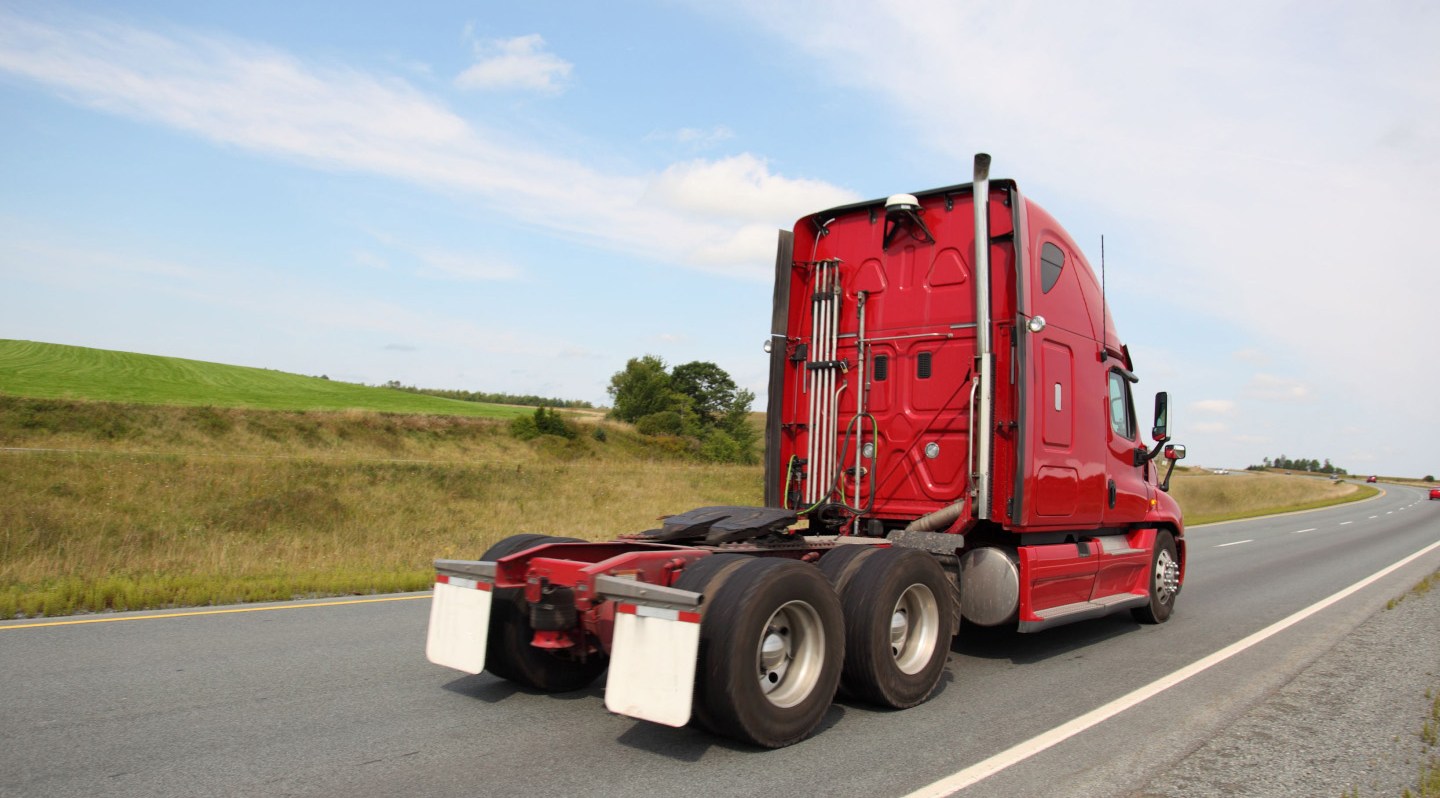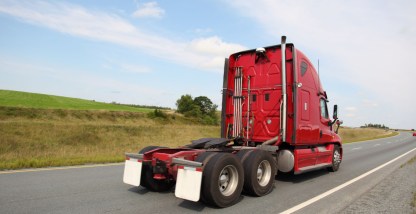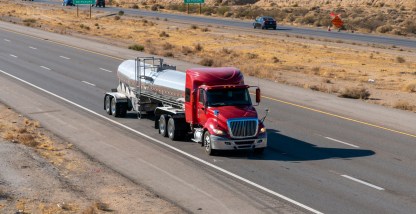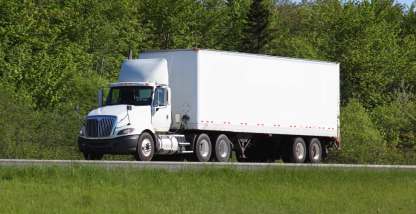Manufacturers, grocers, ecommerce, and construction companies are just some of the many businesses that can fill a trailer with freight. Yet, they may not have their own truck or driver to move it. Instead, they rely on power-only logistics to get their shipment where it needs to go. This article explores power-only trucking and addresses challenges of power-only logistics.
What does “power-only” mean in trucking?
Power-only trucking is a convenient solution for shippers who own or lease their own trailers but don’t have their own fleet of trucks or drivers. Once they fill the trailer with freight, they need to hire a semi-tractor and driver to get the trailer from point A to point B. The driver, in the semi, provides the “power.”
Different types of shippers will source trucks and drivers, also known as a “power unit” to safely and efficiently move loads. They might have a regular transportation partner they work with or could turn to different power-only trucking companies based on the type of freight, where the freight is located, or where it needs to go.
After finding the a semi-tractor and driver, usually a trailer interchange agreement is signed and the shipper’s trailer is secured to the power unit to hit the road. You might also hear of power-only shipping as drop-and-hook shipping, as it refers to the process of hooking a truck to a shipment trailer.
What types of companies use power only?
Companies that have open deck or dry van commodities generally enjoy the advantages of power-only trucking as their shipments are of a pick-up-and-go nature. It helps that these types of freight can sit in a fully loaded trailer while the power unit is located. Expect companies using power-only trucking to also have ample space available to park their many trailers as they don’t have a pool of tractors or drivers around.
That’s not to say perishables or goods that need refrigeration can’t be shipped power only. They can, but the shipper has to have a reefer trailer.
Third-party logistics providers offer power-only trucking solutions as part of their flexible offerings to customers. They generally combine power-only capacity with leased trailers or with the shipper’s own trailers.
Typical power-only logistics rates
Power-only trucking rates are determined by the same factors as other freight rates. These include:
- Supply and demand at point of origin.
- Type of trailer required.
- Shipment urgency.
- Length of haul.
- Weather conditions.
- Supply and demand at destination.
- Any special requirements for shipment.
Who’s responsible for the insurance costs in power-only trucking?
Two types of insurance generally cover power-only trucking: trailer interchange and non-owned trailer. Trailer interchange coverage was created to insure trailers owned by a single company/customer. Non-owned trailer coverage insures truck owners pulling trailers for multiple, different businesses.
Different companies will have various policies and claim rules, with each customer or truck broker also having different insurance requirements. Expect brokers to require truck owners to have liability and cargo insurance.
Is power-only trucking worth it?
Power-only trucking offers shippers several advantages. The pros include:
- Ability to focus on production schedule efficiency.
- Providers coordinate pickups to get freight moving.
- Avoids investment in owning a pool of tractors and training drivers.
- Fuel costs and truck expenses covered by driver or power-only trucking company.
- Offers flexibility when a facility or warehouse moves, for special shipping projects, or to meet shipping surges.
For drivers, there’s also the benefit of taking a power-only load to drive for their full allotted hours of service (HOS). They might not have the hours available to budget for loading a trailer but by taking a power-only pickup, they make the most of their available 14 hours. This can, in turn, prove advantageous to the shipper as they may get a better rate from drivers.
Power-only trucking can have downsides too. Yes, shippers can store their freight onsite in trailers instead of needing to expand warehouse space. But they’re taking on the responsibility for maintaining and servicing their own trailers. It’s not as expensive as having a full fleet, but the shipper does have to ensure that their trailers are in reliable shape. Otherwise, the driver might refuse the load.
Also, as with any type of logistics solution, urgent deliveries can be more costly. With power-only trucking, immediacy is more challenging as a driver needs to be found with an available semi-tractor.
The shipper must also rely on an external provider to make an on-time delivery. Having goods arrive on time is critical to customer satisfaction and business success, so it’s critical to find a reliable partner to offer delivery performance you can count on.
There’s also the question of how to return that trailer to its original location. Shippers need to find ways to coordinate freight to avoid having to hire drivers to drop off empty trailers. They may own those trailers, but paying to have them on the road empty is a cost trucking companies want to avoid.
Common challenges faced by power-only trucking companies
Companies working with power-only freight need to connect with shipments. This can mean building relationships with companies that have their own trailers or using load boards to see available choices. However, focusing on the power-only market does narrow load opportunities.
Further, power-only operators surveyed by OverDrive identified additional headaches from this type of shipment. For one thing, competition is fierce, which means making cost/revenue calculations before a load is taken by another driver is challenging, and rates are often non-negotiable. Plus, deadhead miles are a greater risk. And speaking of risk, drivers have to trust the trailer owner to provide a well-maintained trailer for hauling.
How to optimize your power-only logistics with Motive
Motive’s software can help with power-only trucking services. Take the problem of a power-only trailer reaching its destination but then needing to get back to its home base. To avoid paying for a driver to return with an empty trailer, using dispatch and workflow management tools can help ensure you pick up shipments for the trip back to the origin. If you’d like to know more about Motive Dispatch, check out this product brief.
Motive’s real-time GPS tracking solution also helps power-trucking companies boost their on-time delivery. With our fleet management software, you receive real-time data about driver and semi-tractor whereabouts. You can also optimize routes based on historical location reports, current weather conditions, and other factors. When the truck is nearing the endpoint, notifications let you communicate with the shipper to expect delivery, which enhances customer experience.
Additionally, with our maintenance integration solution, you can also proactively identify maintenance problems and plan preventative maintenance to keep your fleet on the road. Plus, our AI-powered solution supports driver safety and helps prevent accidents. Counter unsafe driving habits with automated coaching and help assign the best drivers to the shipment with Motive Safety Hub and Coaching Reports, which provide a holistic view into the safety of your operations and the impact of your safety program.
Motive’s always-evolving software is constantly improving to fuel your business productivity and profitability. Find out how we can benefit your power-only trucking company too. Sign up today.








